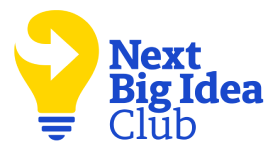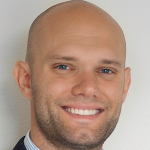Pat Flynn is an entrepreneur, podcaster, and author of several books. He is the founder of Smart Passive Income, where he has helped millions of people build their businesses and learn new skills more effectively. He has a diverse portfolio of businesses, award-winning podcasts, newsletters, YouTube channels, and thriving online communities. He reaches and inspires millions of people each month and serves as an advisor to dozens of companies.
What’s the big idea?
We no longer live in a world where information is as valuable as it once was. The smartest person in class who can recall the most information is no more valuable than an AI tool that everyone can access. The most essential skill has become lean learning. We must stop focusing on learning everything and instead know what is necessary to learn for our current purpose or mission. The principles of lean learning help filter out the information overwhelm to learn faster, achieve more, and master the things that matter most.
Below, Pat shares five key insights from his new book, Lean Learning: How to Achieve More by Learning Less. Listen to the audio version—read by Pat himself—below, or in the Next Big Idea App.

1. The power of just-in-time learning.
Most of us are information hoarders. We save articles to read later and bookmark resources just in case we need them someday. But this approach slows us down. When I was building my first business, I spent months researching every aspect of online marketing before taking any action. I had folders full of PDFs and bookmarks organized into categories, along with a massive amount of conflicting advice. The result: paralysis by analysis.
Everything changed when my business coach told me to focus only on the information I needed for my next immediate step. If I was writing a study guide, I only learned about writing and formatting. When it was time to create a sales page, then I learned about copywriting. This just-in-time approach allowed me to apply what I learned immediately, which made it stick better and yielded faster results. The key is to resist the urge to learn everything up front. Instead, identify your next action, gather only the information needed for that step, then implement immediately. This creates a powerful cycle of learning and doing that accelerates progress dramatically.
We now live in a world full of any information that we need, available at any moment in time. Trust that resources will be available when you need them, and they will probably be better than the ones you found way back before you needed to take action. This is the conundrum of learning: because we have access to everything, we can learn everything and go nowhere.
2. Micro mastery: breaking skills into tiny components.
Most people try to improve everything simultaneously and end up improving nothing. It’s like trying to juggle while learning to ride a unicycle. You’re setting yourself up for failure. Or imagine the band conductor who wants his musicians to get better only by having them play the same song over and over again, without breaking down certain sections to improve those parts. I learned this lesson when I was struggling with my email marketing.
Instead of trying to optimize my entire email funnel at once, I focused exclusively on subject lines for 30 days. I studied only subject line psychology, tested different approaches, and tracked open rates obsessively. The result was a 68 percent improvement in open rates in just one month. Here’s how micro mastery works.
“No matter what you are trying to learn, going small can definitely mean going big.”
Take email marketing, for example. It’s not one skill. It’s several micro skills: list building, subject lines, email content, calls to actions, and deliverability. Instead of trying to master all five, pick one and focus exclusively on that for a defined period. This approach works because it allows you to see dramatic improvements quickly, which builds momentum. When you improve one component significantly, it creates a ripple effect throughout the entire system. More people opening your emails means more people reading your content and clicking your links, even if you haven’t changed anything else.
Another example is a friend of mine who is an ultramarathon runner. He would take weeks at a time to focus on one micro component of running ultramarathons. For instance, he spent a few weeks focused solely on how his heel hit the ground in his stride. He hired a camera crew to slow-motion record his foot impact and how he bounced off into the next stride. He was able to improve an efficiency that was only a few percentage points, however, across 50 miles, you can understand how dramatic this improvement can be.
No matter what you are trying to learn, going small can definitely mean going big.
3. Voluntary force functions: creating your own pressure.
We’ve all experienced moments where external pressures force us to learn quickly, like cramming for an exam, preparing for a presentation, or handling an emergency at work. But what if we could create that same productive pressure intentionally? In 2011, I was terrified of public speaking, but I knew it would help my business. Instead of taking a class or practicing in private, I said yes when a friend asked me to deliver the closing keynote at his conference with only 30 days to prepare. This voluntary force function forced me to learn public speaking faster than years of casual practice ever could.
The key element of an effective voluntary force function is a leap of faith moment where you commit to a deadline. You must move stakes high enough to motivate but not paralyze you. It must be a meaningful challenge aligned with your goals that offers clear rewards on the other side.
“The key element of an effective voluntary force function is a leap of faith moment where you commit to a deadline.”
You can create these for yourself by signing up for competitions, scheduling presentations, or making public commitments. The pressure isn’t punishment. Rather, it’s a catalyst that helps you access capabilities you didn’t know you had or ones that you wouldn’t use without that additional pressure.
4. Persist or pivot: knowing when to keep going and when to change direction.
One of the most challenging decisions in any learning journey is whether to persevere through difficulties or try a different approach. I’ve seen people waste years persisting with the wrong strategy, and others give up before they achieve their breakthrough. The persist or pivot framework involves regular self-assessment using what I call the three Ps:
- Progress: Am I moving forward, even if slowly?
- Passion: Does this still energize me, or has it become a constant drain?
- Purpose: Is this still aligned with my values and long-term vision?
I use this framework quarterly. If all three Ps are positive, I persist with confidence. If one is negative, I investigate and adjust. If two or more are consistently negative, it’s time to pivot.
When I was building my architecture exam website back in 2008, there were moments when progress felt slow, and I questioned everything. But my passion remained high, and the purpose of helping people pass a difficult exam was deeply meaningful. I persisted, and it became a million-dollar business. The key is honest self-reflection, combined with input from trusted advisors who can see what you might miss when you’re too close to the situation.
5. Teaching accelerates learning.
Most people think teaching comes after mastery, but I’ve discovered that teaching is a part of the mastery process itself. When you explain concepts to others, you’re forced to organize your thoughts, identify gaps in your understanding, and find new ways to communicate complex ideas.
This became extremely clear when I started my podcast. Initially, I thought I needed to be an expert before interviewing other experts, but I discovered that asking good questions and synthesizing insights from my audience deepened my own understanding of business and entrepreneurship. You don’t need to wait until you’re an expert. Just start teaching.
“When you can explain something simply, it means you truly understand it.”
You can teach what you’re learning as you learn it. Start a blog documenting your journey, create videos explaining concepts you’re studying, or simply help a friend who is a few steps behind you. When someone asks you a question you can’t answer, it highlights exactly what you need to study next. When you can explain something simply, it means you truly understand it.
Teaching also creates accountability. When others are counting on you to share insights, you’re more likely to stay committed to your learning journey. I recently had a friend who was learning how to play the ukulele in Hawaii from some amazing professional ukulele players. One day, only a few weeks after starting lessons, the ukulele instructor asked my friend to teach the ukulele to his eight-year-old son. My friend was a little surprised and bewildered at the thought because he had only just started. He only knew a few chords and was nowhere near expert level. The master had known that by teaching his son, my friend would then internalize the chords and be able to reproduce them at his own will.
It didn’t take long for my friend to understand that this is exactly what was happening. He was able to teach his instructor’s son, sharing the chords in a way that was memorable for both him and the son. The teaching became synthesis. What an incredible thing for the master ukulele players to ask students to do.
The skill of the future is lean learning: learning the right things at the right time and applying them immediately to overcome fear and stop procrastinating.
Enjoy our full library of Book Bites—read by the authors!—in the Next Big Idea App:































